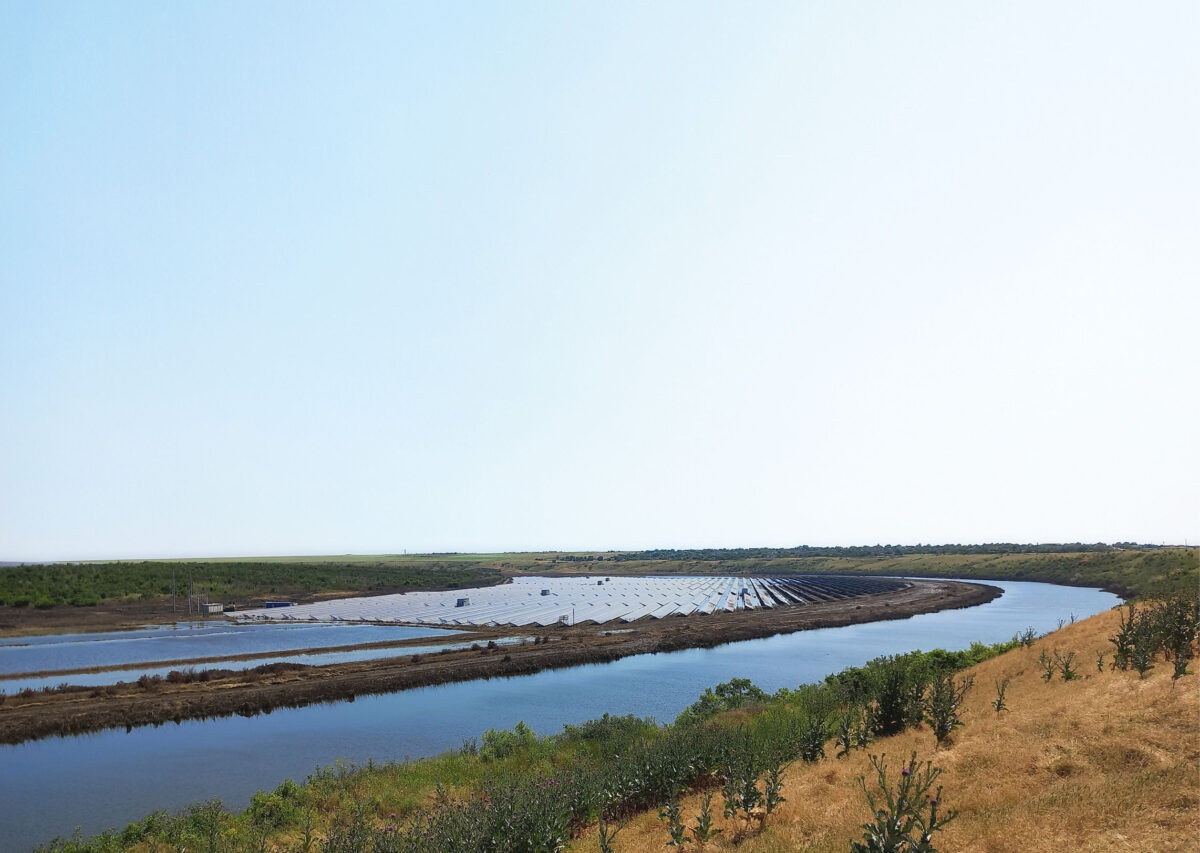https://www.pv-magazine.com/2023/08/12/weekend-read-hopes-washed-away/
Hopes washed away

The Trifonovskaya plant, operated by Clean Energy, was damaged by the flooding.
Photo: Clean Energy
With the destruction of the Kakhovka hydropower dam believed to be the worst man-made disaster in Europe since the Chernobyl nuclear accident, the impact of flooding will be experienced by the environment and people for generations to come. Dozens of people died in the flood and massive losses were sustained on the energy front.
“The destruction of the Kakhovka hydropower plant for Ukraine means the loss of 344 MW of the plant’s maneuvering capacity, which is essential for regulating the Ukrainian electricity system,” says Oleksiy Orzhel, director of the Ukrainian renewable energy association. “We also lost about 80 MW of installed capacity at the Kherson Combined Heat and Power Plant, and the shunting mode of the entire cascade of hydroelectric power plants on the Dnipro river has deteriorated.”
Solar energy suffered enormous damage too. Orzhel tells pv magazine that roughly 150 MW of installed generation capacity was flooded in the Kherson region, near the town of Oleshky, and in the Mykolaiv region. At this point, it is hard to say anything about their condition since some remain underwater while others sit in the territories controlled by Russian forces.
“It will be possible to talk about the resumption of operation – or complete destruction – of such substations, due to flooding, only after a full technological audit,” says Orzhel.
Plants underwater
Clean Energy Group is among many businesses which have generation capacity in the flooded territory, Andriy Simonovich, the company’s general director, tells pv magazine. “The station in the Mykolaiv region, which is located next to the Ingulets river, was the most affected,” he says. “Although the station is located at a distance of more than 30 km from the Dnipro river, the water level in the Ingulets river rose by more than six meters, thereby completely flooding the plant.”
Once the water level subsided, the company conducted an audit of the damage, the results of which were discouraging. “All the equipment was covered with a layer of silt, all electronics were completely damaged, the contacts were oxidized, and the hardware was covered with rust,” says Simonovich. “Since the solar modules continued to generate electricity until they were completely covered with water, the equipment in the junction boxes burned out.”
On the plus side, the analysis showed that the solar modules remain in working condition but need cleaning and some repair. The Clean Energy Group plans to clean all the equipment, replace some of the damaged components, and then send some parts to their original manufacturers for repair. The restoration will take several months and cost millions of local-currency hryvnia, but the company’s managers believe the affected plants could eventually be put back into operation.
Popular content
The extent to which the Kakhovka disaster affected Ukrainian solar energy is still being determined, says Anton Antonenko, vice president of Ukrainian thinktank DiXi Group. “The possibility to assess direct damage, particularly to the solar sector, is much limited due to severe shelling in the Kherson and adjacent regions,” Antonenko tells pv magazine. He adds that 13% of the country’s solar power capacity remains in the hands of Russians and it is not clear in what condition those sites were even before the flood.
“One of the long-term impacts relates to diminishing critical flexible capacity in Ukraine’s power system, which is utilized for balancing intermittent renewables, particularly PV,” says Antonenko. “Lack of such capacity would lead to increased curtailment of RES [renewable energy source] electricity production, applied by the [electricity] transmission system operator, and a consequent financial imbalance.”
Scale of losses
The destruction of the Kakhovka hydroelectric power station and the flooding of large areas has, according to preliminary estimates, affected at least 500 MW of renewable energy generation capacity in Mykolaiv and Kherson, including in occupied territory, estimates Artem Semenyshyn, head of the Solar Energy Association of Ukraine.
“The high water caused tremendous damage to some active solar stations in the south,” Semenyshyn says. “Long-term exposure of panel and transformer equipment under water leads to significant damage to generating capacity or the threat of their failure in the future.”
Ukraine’s solar energy sector has also suffered an indirect impact from the disaster. Semenyshyn says the shutdown of electrical substations due to flooding makes it impossible for other grid connected solar plants to generate power and this also incurs significant losses from forced imports of electricity.
“All the damage can be accurately calculated much later but it is already obvious that this catastrophe has had a significant impact on renewable energy in Ukraine,” adds Semenyshyn.
This content is protected by copyright and may not be reused. If you want to cooperate with us and would like to reuse some of our content, please contact: editors@pv-magazine.com.



